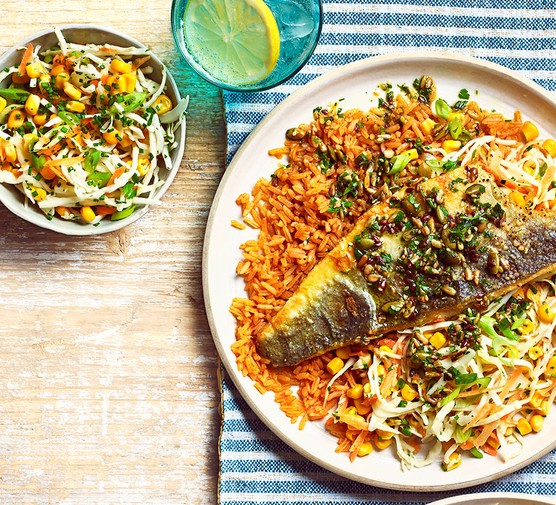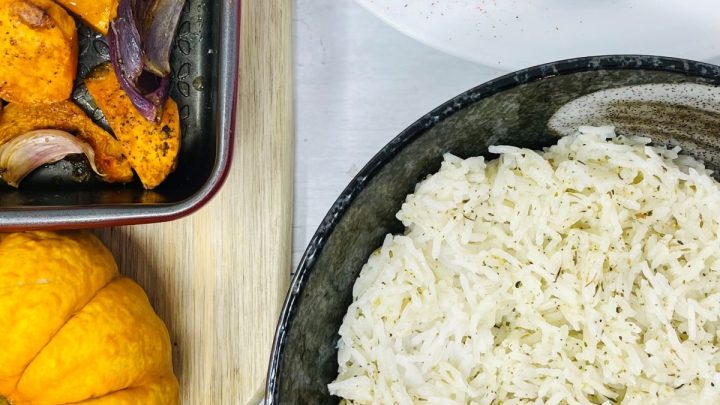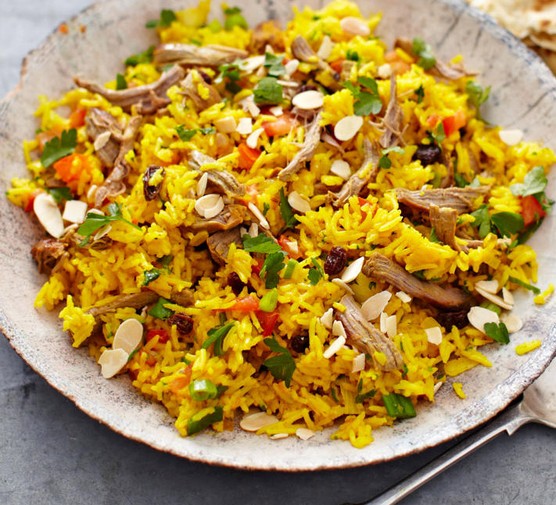In the world of comfort foods, few dishes evoke the warmth of home quite like pilaf. This humble rice preparation, steeped in centuries of culinary tradition, has evolved from ancient Persian kitchens to modern dinner tables worldwide. But what if we told you there’s a way to elevate this classic with just a bit of patience and a stick of butter? Enter brown butter pilaf—a symphony of nutty aromas, fluffy grains, and that irresistible golden hue that makes every bite feel indulgent yet effortless.
Brown Butter Pilaf If you’re scouring for a side dish that steals the show or a standalone meal that whispers sophistication, brown butter pilaf is your answer. In this comprehensive guide, we’ll dive deep into its origins, unpack the science behind the sizzle, and arm you with a foolproof recipe that’s customizable to your pantry. Whether you’re a novice cook intimidated by the stovetop or a seasoned chef craving innovation, this 3000-word exploration will leave you inspired to fire up your kitchen.

We’ll cover everything from the alchemy of browning butter to creative variations that nod to global flavors. Plus, we’ll sprinkle in tips for perfection, pairing ideas, and even the health perks that make this dish a guilt-free indulgence. Ready to transform your rice routine? Let’s simmer into it.
The Allure of Brown Butter: Why This Simple Step Changes Everything
Brown butter isn’t just butter—it’s butter’s glow-up. At its core, browning butter involves gently heating unsalted butter until the milk solids separate, caramelize, and infuse the fat with a toasty, hazelnut-like depth. This transformation happens through the Maillard reaction, a chemical dance between amino acids and sugars that creates those complex, savory flavors we crave in everything from cookies to sauces.
But why pair it with pilaf? Traditional pilaf relies on broth for savoriness, yet brown butter adds layers of umami and richness that elevate the dish from staple to star. Imagine the subtle nuttiness clinging to each rice grain, contrasting the subtle earthiness of vegetables or the tang of citrus. It’s no wonder recipes like the Lemony Brown-Butter Mushrooms Pilaf from Bon Appétit have gone viral— that glossy, aromatic finish is pure magic.
Scientifically speaking, as the butter heats to around 250-300°F (120-150°C), the water evaporates, and the solids toast without burning. Brown Butter Pilaf This process concentrates the butter’s natural diacetyl compounds, giving it that popcorn-like pop. Home cooks love it because it’s forgiving: a mere five minutes can upgrade any dish. In pilaf, it serves as both a cooking fat and a flavor bomb, sautéing aromatics before absorbing into the rice for even distribution.
For those new to browning, start small. Use clarified butter if you’re nervous about scorching, or opt for grass-fed varieties for extra beta-carotene that deepens the color. Pro tip: Strain through cheesecloth to remove any pesky bits, ensuring a silky texture. This isn’t just technique—it’s tradition. French chefs call it beurre noisette (hazelnut butter), a nod to its marbled appearance, while Italians dub it burro nocciola. In our brown butter pilaf, it bridges cultures, turning a Middle Eastern base into a fusion favorite.
Beyond flavor, brown butter’s antioxidants from the caramelization process offer a subtle health boost, fighting free radicals as you savor. It’s versatile too: Drizzle leftovers over our internal roasted Brussels sprouts recipe for a match made in heaven. As we explore further, you’ll see how this golden elixir anchors our pilaf masterpiece.
Tracing the Roots: A Brief History of Pilaf, from Persia to Your Plate
Pilaf’s story is as layered as its flavors, weaving through trade routes, empires, and migrations. The dish’s origins trace back to ancient Persia around the 5th century BCE, where rice—introduced from India via the Silk Road—became a canvas for culinary creativity. Persian cooks, masters of spice and subtlety, developed polow, a method of parboiling rice in seasoned broth to achieve fluffy, separate grains. This technique, documented in early Zoroastrian texts, emphasized balance: rice as the star, enhanced by saffron, dried fruits, and meats.
By the 13th century, Arabic cookbooks like Kitab al-Tabikh described ruzz mufalfal—rice grains as distinct as peppercorns—spreading the method westward through Moorish Spain and eastward to India as pulao. The Ottoman Empire supercharged its popularity, with pilav becoming a staple in Turkish palaces. Sultans hosted feasts where massive copper cauldrons bubbled with lamb, pistachios, and cinnamon-infused rice, symbolizing abundance.
Brown Butter Pilaf Colonial exchanges carried pilaf to the Americas and Europe. Spanish explorers brought it to the New World, where it morphed into Creole jambalaya. In the U.S., Armenian immigrants introduced vermicelli-toasted versions in the early 20th century, a nod to Levantine influences. Today, pilaf boasts five global “schools”: Persian (herbaceous), Turkish (buttery), Indian (spiced), Central Asian (hearty with meats), and Western (streamlined sides).
Enter brown butter: A Western twist born in the 20th century, when European butter techniques met immigrant rice traditions. Post-WWII, as global cuisines fused in American kitchens, recipes like Recipe Girl’s Brown Butter Rice emerged, blending French finesse with pilaf’s structure. It’s a testament to adaptation—pilaf’s enduring appeal lies in its modifiability.
This history isn’t dusty trivia; it’s inspiration. As you craft your brown butter pilaf, channel those ancient Persians: Sauté with intention, season with story. For more on rice’s global journey, check our internal feature on saffron’s storied past.
Ingredients Breakdown: Building Blocks for Irresistible Brown Butter Pilaf
Great pilaf starts with quality components. Our base recipe serves 4-6 as a side, scalable for crowds. Here’s the lineup, with swaps for dietary needs:
Core Staples
- Long-grain rice (1.5 cups): Basmati or jasmine for fragrance; avoid short-grain to prevent gumminess. Rinse until water runs clear to remove starch.
- Unsalted butter (½ cup, or 1 stick): Grass-fed for richer flavor. Brown it fresh—store-bought ghee works in a pinch.
- Chicken or vegetable broth (3 cups): Low-sodium to control salt; homemade elevates. For vegan, use mushroom stock.
Aromatics and Enhancers
- Onion (1 medium, diced): Yellow for sweetness; shallots for subtlety.
- Garlic (2 cloves, minced): Fresh, not jarred, for punch.
- Bay leaf (1) and fresh thyme (1 tsp): For herbal depth; sub dried if needed.
- Salt and black pepper (to taste): Kosher for even seasoning.
Optional Add-Ins for Flair
- Sliced almonds or pine nuts (¼ cup, toasted): As in Woolworths’ Double Lemon Pilaf, for crunch.
- Dried cranberries or raisins (¼ cup): Sweet-tart contrast.
- Lemon zest and juice (from 1 lemon): Brightens like in Bon Appétit’s version.

Sourcing matters: Opt for organic rice to minimize arsenic concerns, and fair-trade nuts for ethics. Total cost? Under $10 for basics. For gluten-free assurance, confirm broth labels. These elements harmonize in the pot, but their interplay shines in execution—next, the method.
Step-by-Step Recipe: Your Roadmap to Fluffy, Nutty Perfection
Now, the heart: Crafting brown butter pilaf. This 30-minute wonder yields 4 cups. Prep time: 10 mins | Cook: 20 mins.
Step 1: Brown the Butter (5 minutes)
In a medium saucepan over medium heat, melt butter. Swirl gently as it foams—watch for golden flecks and nutty scent. About 4-5 minutes in, remove from heat to halt cooking. Strain if desired. This step, per Borrowed Bites’ guide, is non-negotiable for flavor.
Step 2: Sauté the Aromatics (3 minutes)
Return pan to medium-low. Add diced onion; cook until translucent. Stir in garlic, bay leaf, and thyme. The brown butter’s residual heat infuses everything—aromas will fill your kitchen like a hug.
Step 3: Toast the Rice (2 minutes)
Add rinsed rice. Stir to coat in buttery goodness, toasting lightly for nuttiness. This mimics Armenian styles, preventing mush. Off heat, deglaze with a splash of broth if sticking.
Step 4: Simmer to Absorb (15 minutes)
Pour in remaining broth, salt, and pepper. Bring to boil, then reduce to low simmer. Cover tightly—no peeking! Cook until liquid absorbs and rice is tender. Fluff with fork; rest 5 minutes off heat.
Step 5: Finish and Serve
Stir in lemon zest/juice or nuts. Garnish with parsley. Voila—golden grains that hold shape.
Troubleshooting: If soggy, reduce broth next time. For altitude adjustments, add 5-10% more liquid. Scale up for holidays; it reheats beautifully. Pair with our herb-crusted chicken for a full meal.
Variations: Global Twists on Your Brown Butter Pilaf Canvas
Pilaf’s beauty? Adaptability. Start with our base, then riff.
Mushroom Medley Pilaf
Sauté 8 oz sliced mushrooms in the butter post-browning. Use veggie broth. Inspired by Bon Appétit, add dill for earthiness. Vegan win.
Wild Rice Harvest
Swap half the white rice for wild; extend cook to 45 mins. Drizzle lemon-maple vinaigrette post-cook for autumn vibes.
Spiced Moroccan Pilaf
Infuse butter with cumin and paprika, per BBC Good Food. Add cinnamon, apricots, and chickpeas for tagine-like depth.
Lemon-Almond Dream
Toast almonds in butter; zest two lemons. Ideal for fish pairings.
These tweaks keep it fresh—experiment seasonally. For more inspo, explore external wild rice benefits.
Pairing Perfection: What Complements Brown Butter Pilaf Best
This versatile side shines solo but soars with mains.
- Proteins: Grilled salmon for omega-3 synergy; our internal steak au poivre for richness.
- Veggies: Roasted roots or steamed greens.
- Wines: Crisp Sauvignon Blanc cuts the butter; pair reds like Pinot Noir with meaty versions.
- Desserts: Follow with citrus sorbet to refresh.

For holidays, it bulks up casseroles. Simple, yet elevated.
Nutritional Spotlight: Why Brown Butter Pilaf Fuels You Right
Don’t let the butter fool you—this dish packs nutrition.
- Carbs for Energy: Rice provides sustained fuel (45g per serving).
- Healthy Fats: Brown butter’s CLA aids heart health.
- Add-In Boosts: Mushrooms offer vitamin D; nuts, magnesium.
At ~250 calories/serving, it’s balanced. For full breakdown, see USDA rice nutrition. Gluten-free, easily veganized.
Pro Tips and Pitfalls: Elevate Without the Stress
- Tip: Use a heavy pot for even heat.
- Pitfall: Over-stirring—leads to breakage. Fluff once.
- Storage: Fridge 4 days; freeze 2 months.
- Upgrade: Infuse broth with saffron overnight.
Avoid high heat post-simmer to prevent scorching. For visuals, watch Eazy Peazy’s tutorial.
Wrapping Up: Your Invitation to Pilaf Mastery
Brown butter pilaf isn’t just food—it’s a ritual of flavor and history. From Persian roots to your fork, it’s proof that simple ingredients yield profound joy. Whip it up this week; your taste buds (and guests) will thank you. Share your twists in comments!
For more recipes, browse our collection. Hungry for more? Subscribe!